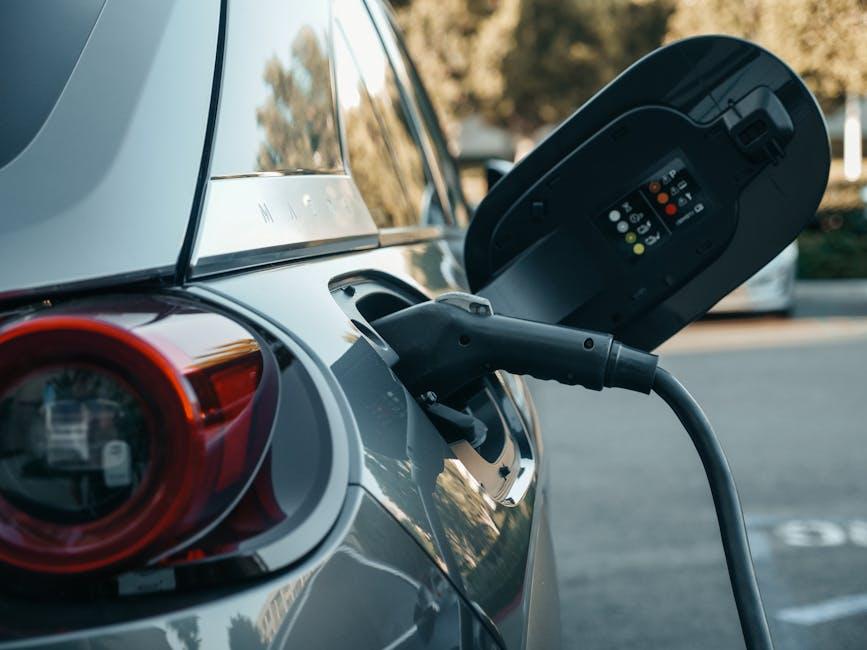In the intricate dance of modern driving, the car battery plays the silent yet vital role of keeping everything humming smoothly — from the moment you twist the key to the last click of the radio. Yet, when it’s time for a replacement, the sheer variety of options can be overwhelming, leaving many drivers puzzled over which battery truly fits their needs. Choosing the right car battery isn’t just about power; it’s about understanding performance, compatibility, and longevity to ensure your vehicle runs reliably no matter the journey ahead. This article will guide you through the essential factors and expert tips to help you make a confident, informed decision the next time you shop for a new car battery.
Table of Contents
- Understanding Your Vehicle’s Power Needs
- Decoding Battery Specifications and Ratings
- Exploring Different Types of Car Batteries
- Evaluating Battery Lifespan and Warranty Options
- Tips for Proper Battery Maintenance and Care
- Where to Buy and How to Compare Prices Effectively
- Q&A
- Insights and Conclusions

Understanding Your Vehicle’s Power Needs
Every vehicle has unique electrical demands, and understanding these requirements is key to selecting a battery that will reliably power your car. Modern vehicles are equipped with an array of electronic components—from infotainment systems to advanced safety features—that require a steady and sufficient supply of power. It’s not just about starting the engine; your battery also sustains these components when the engine is off. Factors like engine size, climate, and usage patterns play significant roles in determining the power capacity your battery must deliver.
To make an informed choice, assess your car’s power needs considering the following:
- Cold Cranking Amps (CCA): Critical for igniting the engine in cold conditions, higher CCAs ensure better starting power.
- Reserve Capacity (RC): Indicates how long your battery can run on its own if the alternator fails, essential for consistent power supply.
- Battery Size: Must match your vehicle’s specifications to fit securely and connect properly.
| Vehicle Type | Recommended CCA | Typical RC (minutes) |
|---|---|---|
| Compact Cars | 400-550 | 60-80 |
| SUVs & Trucks | 600-800 | 100-120 |
| Luxury Vehicles | 700-900 | 120-140 |

Decoding Battery Specifications and Ratings
Understanding the numbers and codes on a car battery can seem daunting, but breaking them down helps you select the perfect match for your vehicle. Cold Cranking Amps (CCA) measure the battery’s ability to start your car in cold temperatures — the higher the CCA, the better your battery performs in freezing conditions. Then, there’s the Reserve Capacity (RC), indicating how long the battery can provide power if the alternator fails. Together, these specs ensure your car gets the power boost it needs when things get tough.
Other important indicators include the Battery Group Size, which corresponds to the battery’s physical dimensions and terminal placement, crucial for fitting your car’s battery tray and cable setup perfectly. Don’t overlook the Voltage (usually 12 volts for most cars) and the AMP Hour (Ah) rating, which tells you how much energy the battery can deliver over time. When choosing, consider your car’s engine size, climate, and added electrical components for optimal performance.
| Specification | What It Means | Why It Matters |
|---|---|---|
| CCA (Cold Cranking Amps) | Power output at 0°F | Ensures reliable starts in cold weather |
| Reserve Capacity (RC) | Minutes battery lasts under load | Backup power when alternator fails |
| Group Size | Physical battery dimensions | Proper fit in battery tray |
| Voltage | Electrical potential (usually 12V) | Compatibility with the vehicle system |
| AH (Amp Hours) | Battery capacity over time | Duration of usable battery life |

Exploring Different Types of Car Batteries
When selecting a car battery, understanding the various types available can save you from future hassles and ensure optimal performance. The most common varieties include Lead-Acid (Flooded) Batteries, prized for their affordability and reliability, and Absorbent Glass Mat (AGM) Batteries, known for their enhanced durability and superior handling of electrical demands in modern vehicles. Additionally, Gel Cell Batteries are designed to provide stable power under extreme conditions, featuring a silica-based gel electrolyte that prevents spillage and improves life span. Each type caters to different needs, from everyday commuting to rugged off-road adventures.
To provide a clearer picture, here is a simplified comparison of the main battery types and their key traits:
| Battery Type | Strengths | Best For |
|---|---|---|
| Lead-Acid | Cost-effective, widely available | Standard vehicles, budget-friendly |
| AGM | Vibration-resistant, maintenance-free | Modern cars, vehicles with high electrical load |
| Gel Cell | Leak-proof, excellent in extreme temperatures | Specialty vehicles, off-road and marine use |
- Consider vehicle needs: High-tech cars often benefit from AGM batteries.
- Climate impact: Gel batteries excel in hot or cold environments.
- Maintenance tolerance: Choose between maintenance-free or conventional batteries.

Evaluating Battery Lifespan and Warranty Options
When selecting a car battery, understanding its expected lifespan is crucial for making a smart investment. Most car batteries last between 3 to 5 years, but this can vary based on factors like climate, driving habits, and vehicle type. Batteries exposed to extreme heat or cold may degrade faster, while regular maintenance and performance checks can prolong their effectiveness. Always check the manufacture date stamped on the battery and verify its remaining usable life before purchasing.
Warranty options often reflect the manufacturer’s confidence in the battery’s durability and can safeguard your purchase against premature failure. Typical warranties range from 1 to 3 years, with some offering prorated coverage beyond the full warranty period. Here’s a quick glance at common warranty terms you might encounter:
| Warranty Type | Duration | Coverage |
|---|---|---|
| Free Replacement | 1-2 years | Full cost covered if battery fails within warranty |
| Pro-Rated | 2-4 years | Partial refund based on remaining lifespan |
| Limited | Up to 5 years | Coverage for manufacturing defects only |
- Read warranty fine print to understand obligations and claim steps.
- Keep your receipt and note warranty start dates.
- Consider extended warranties if you drive frequently or in harsh environments.

Tips for Proper Battery Maintenance and Care
Maintaining your car battery extends its life and ensures consistent performance, especially during critical moments. Start by keeping the terminals clean; corrosion can block the electrical flow and reduce efficiency. Use a mixture of baking soda and water with a soft brush to gently scrub away any buildup. Regularly check the battery’s charge level, particularly before extreme weather seasons, since both cold and heat can drain or damage the cells. If your vehicle is parked for extended periods, consider using a trickle charger to maintain battery health without overcharging.
Practical steps for ongoing battery care include:
- Securing battery hold-downs to prevent vibration damage.
- Inspecting the battery case for cracks or leaks that may indicate internal issues.
- Ensuring electrical connections are tight and free of rust or dirt.
- Testing voltage regularly using a multimeter for early signs of decline.
| Maintenance Task | Recommended Frequency | Benefit |
|---|---|---|
| Terminal Cleaning | Every 3 months | Prevents corrosion buildup |
| Voltage Testing | Every 6 months | Monitors battery health |
| Visual Inspection | Monthly | Detects leaks or damage early |
| Hold-down Check | During oil change | Prevents vibration damage |

Where to Buy and How to Compare Prices Effectively
When it comes to purchasing a car battery, you have several options ranging from physical stores to online marketplaces. Local auto parts stores offer the advantage of personalized advice and immediate product availability. Big-box retailers and dealerships often provide warranties and installation services included in the price. On the other hand, online platforms like Amazon or specialized automotive websites give access to a broader selection and customer reviews that can help confirm your choice. It’s crucial to ensure the retailer is reputable to avoid counterfeit or substandard batteries.
To compare prices effectively, start by identifying the exact battery specifications required for your vehicle—such as group size, cold cranking amps (CCA), and reserve capacity (RC). Use a simple comparison table like the one below to organize options from different sellers:
| Seller | Battery Model | Price | Warranty |
|---|---|---|---|
| AutoPartsPlus | PowerMax 600 CCA | $120 | 24 Months |
| DriveHub | EnerRun 650 CCA | $135 | 36 Months |
| BatteryWorld Online | VoltMax 620 CCA | $110 | 18 Months |
- Check for shipping or installation fees which can affect the overall cost.
- Factor in warranty terms for long-term value rather than just the upfront price.
- Look for seasonal promotions or bundle deals that can save you money.
Q&A
Q&A: How to Choose the Right Car Battery
Q1: Why is choosing the right car battery important?
A1: The right car battery ensures your vehicle starts reliably every time and powers essential electronic systems efficiently. Using the wrong battery can lead to poor performance, shorter battery life, or even damage to your vehicle’s electrical system.
Q2: What are the main types of car batteries available?
A2: The most common types include Lead-Acid (flooded), Absorbent Glass Mat (AGM), and Gel cell batteries. Lead-Acid batteries are cost-effective and widely used, AGM batteries offer better durability and performance, while Gel batteries are less common but excel in extreme conditions.
Q3: How do I know what battery size my car needs?
A3: Battery size depends on the physical dimensions and terminal locations suited for your vehicle’s battery tray and connections. You can check your owner’s manual or consult a battery fitment guide using your car’s make, model, and year.
Q4: What is Cold Cranking Amps (CCA), and why does it matter?
A4: CCA measures a battery’s ability to start an engine in cold temperatures. A higher CCA rating means better starting power during cold weather, so it’s crucial if you live in chilly climates.
Q5: Should I prioritize battery capacity or longevity?
A5: Both matter, but balance is key. Capacity (measured in Ampere-hours) ensures your battery can supply adequate power, while longevity guarantees fewer replacements. Think about your driving habits—frequent short trips may drain the battery faster, so choose accordingly.
Q6: How does my car’s electrical load affect battery choice?
A6: Modern vehicles have numerous electronic systems—infotainment, sensors, start-stop technology—that demand more power. If your car has advanced electronics, consider a battery designed for high electrical loads, like AGM batteries.
Q7: Can I buy any brand of battery, or should I stick to certain manufacturers?
A7: Quality varies between brands. Trusted manufacturers often provide better warranties and reliability. Research reviews and opt for reputable brands for peace of mind.
Q8: How do environmental factors influence battery selection?
A8: Extreme heat can shorten battery life, while extreme cold demands higher CCA. Consider your local climate when choosing a battery type and rating.
Q9: Is installation a complicated process?
A9: Installing a battery generally involves disconnecting the negative terminal first, then the positive, removing the old battery, and reversing the steps to install the new one. If unsure, professional installation is recommended to avoid electrical mishaps.
Q10: When should I replace my car battery?
A10: Most car batteries last 3-5 years. Signs like slow engine cranking, dim lights, or warning indicators suggest it’s time to test or replace your battery.
Choosing the right car battery isn’t just about matching numbers—it’s about matching your vehicle’s needs and your environment to ensure smooth rides and worry-free starts.
Insights and Conclusions
Choosing the right car battery doesn’t have to be a daunting task. With a clear understanding of your vehicle’s needs, battery types, and key features, you’re equipped to make an informed choice that powers your journey reliably. Remember, the right battery isn’t just about starting your engine—it’s about igniting confidence every time you turn the key. So, take charge, shop smart, and keep your drive powered up for the road ahead.

